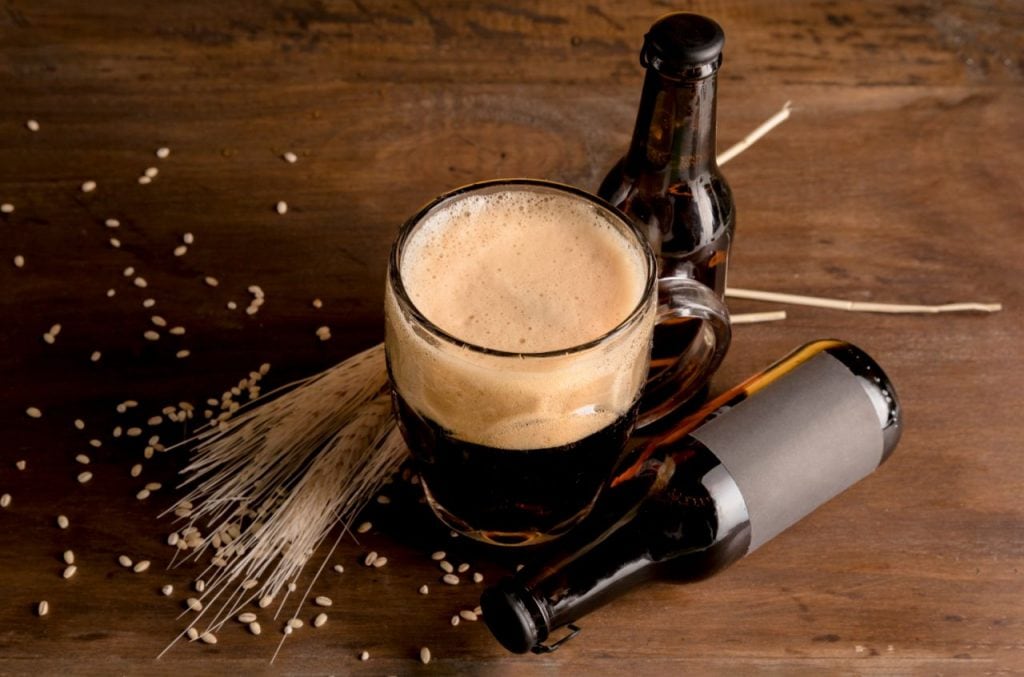There are an abundance of options available to consumers when it comes to beer. But what distinguishes one brewery from another precisely among all those available options?
Microbreweries are artisanal breweries that run on a small scale and produce a limited quantity of beer. They frequently focus on producing one-of-a-kind artisanal goods utilising ingredients of the highest possible quality.
Even more compact than microbreweries, nano breweries typically produce beer in three or fewer batches. In addition, these businesses frequently develop novel processes and experiment with unusual ingredients to produce one-of-a-kind beers.
Craft breweries are often larger than microbreweries, but their operations are still on a lesser scale than those of huge commercial brewers. These brewers frequently concentrate on producing classic styles of beer by making use of premium-grade ingredients and brewing techniques that have stood the test of time.
Microbreweries, nano breweries and brewpubs – what’s the difference? You might be surprised to learn that there is a big distinction between these three types of breweries. So, what’s the scoop? Let’s dive in and take a closer look.
What Are Microbreweries And Nano Breweries?
There are two categories of tiny breweries known as microbreweries and nano breweries. Nano breweries often create even less beer than microbreweries, typically only a few barrels at a time, and microbreweries typically generate fewer than 15,000 barrels per year. However, both breweries are dedicated to producing beer of the highest possible quality through time-honoured techniques.
There has been a growing trend toward supporting local companies in recent years, and microbreweries and nano breweries have profited from this. The term "microbrewery" refers to a brewery that produces less than 5,000 barrels of beer annually. Customers frequently prefer to buy beer from smaller breweries because they know that the beer produced by these breweries is both freshly brewed and made with care.
Additionally, microbreweries and nano breweries typically have a wider variety of one-of-a-kind beers available compared to bigger commercial breweries. As a direct consequence, they have enjoyed steadily rising levels of popularity over the past few years.
Microbrewery

A microbrewery is a tiny brewery that is independently owned and operated and only produces a small volume of beer. Many microbreweries are located in local communities and often use traditional brewing methods to create unique artisanal beers. Since more people are interested in drinking flavorful craft beers brewed in smaller batches, the number of people opening their microbreweries has exploded in recent years. However, you should be aware of a few things before sampling a beer from a microbrewery if you are interested in doing so.
First, most microbreweries offer tours of their facility, so you can learn about the brewing process and taste some of their beer. Second, many microbreweries sell their beer online or through specialty retailers, so you may have to research to find a local supplier. Finally, because microbreweries produce such small batches of beer, each batch is often slightly different from the last. This means you may have to try a few different beers before finding one you love. Micros are good because:
Many consumers favour the flavour of a beer brewed in a microbrewery. A microbrewery is a small brewery owned and operated privately, and it only produces a limited amount of beer at a time.
- These beers frequently feature distinct flavours that cannot be found in beers that are produced in large quantities. In addition, the ingredients that are used in microbreweries are typical of a higher quality than those used in larger breweries.
- As a direct consequence, the cost of their beers is typically higher. However, many people who enjoy beer believe that the flavour is worth paying a little bit more for.
- In addition, many microbreweries are also charitable organisations and help local companies. Consequently, patronising a local microbrewery can function as a means of giving something back to the neighbourhood.
- Last but not least, many people take pleasure in going to microbreweries and talking to the folks who work there. Spending an afternoon or evening doing something like this might be a great way to pass the time.
Whether looking for a new flavour or a way to support your community, buying from a microbrewery is a great option.
Possible drawbacks:
While there are many potential benefits to opening a microbrewery, there are also some possible drawbacks. One of the biggest challenges can be making your beer stand out in a crowded market. With so many craft breweries competing for attention, it can be not easy to get noticed.
You'll need to invest time and energy into marketing your brewery and creating unique beers that appeal to customers. Additionally, the startup costs for a microbrewery can be high. You'll need to purchase brewing equipment and find a suitable location, which can be expensive. Finally, brewing beer is a complex process, and there's always the possibility that something could go wrong. If you're not prepared for the challenges of running a brewery, it's possible that your business could fail.
Nano Brewery
A microbrewery that produces beer in relatively tiny quantities is referred to as a nano-brewery. The word "nanobrewery" refers to small commercial breweries, such as those that create a beer for sale on a regional level. These breweries typically produce less than 5,000 barrels of beer per year. Homebrewers who have decided to take their passion to the next level and open their nano-brewery are frequently the people behind the operation of these businesses.
These brewers frequently produce one-of-a-kind beers that cannot be obtained at larger breweries using novel processes and unproven ingredients. However, there are a few things you need to bear in mind if you plan on sampling beers from a nano brewery in the event that you are interested in doing so.
To begin, nano breweries often do not have a widespread distribution of their beer; therefore, you might need to travel to the brewery itself in order to sample their wares. Second, because nano breweries frequently create only a small amount of each batch of beer, you might want to buy it as soon as possible before they run out of it.
Last but not least, because of the smaller batch sizes, nano breweries typically demand a higher price for their beer than larger brewers do. Despite this, many people who enjoy beer believe that paying a greater price is justified because it gives them the opportunity to try new and creative brews.
Nanos are good because:
Nano breweries are small-scale breweries that often focus on producing specialty beers. Because they are small, nano breweries often have the advantage of being able to experiment with different recipes and ingredients.
- This can lead to the creation of one-of-a-kind and intriguing beers that may not be able to be produced on a bigger scale for various reasons. Additionally, there is frequently a strong sense of community present in nano breweries.
- It is common for these to be neighbourhood establishments that have strong relationships with the communities they serve. Consequently, they frequently have a devoted following of customers who are enthusiastic about patronising neighbourhood companies.
- In conclusion, nano breweries frequently have a highly individualistic quality. Brewers are frequently intimately involved in each and every part of the brewing process, from the selection of the materials to the packaging of the final product.
This allows them to create a unique product that reflects their style and vision. Consequently, nano breweries offer several advantages over their larger counterparts.
Possible drawbacks:
Acquiring necessary equipment is one potential disadvantage associated with launching a nano brewery. Although it is possible to launch a nano brewery with only a moderate amount of capital, the expense of purchasing high-quality brewing equipment may be out of reach for some people who want to start their own brewing business. In addition, nano breweries frequently struggle to generate sufficient money to pay their operational expenses.
This is partially attributable to the fact that the majority of nano breweries are quite small, which restricts their capacity to create huge volumes of beer. As a consequence of this, nano breweries frequently make revenue from taprooms and other forms of sales that are conducted directly with customers.
State and local governments have the authority to impose stringent regulations on nano breweries if they so want. Nano breweries are only permitted to sell their beer on-site in many different jurisdictions, which can restrict the possibility for their businesses to expand.
Key Differences Between Commercial Large-Scale Breweries, Microbreweries, And Nano Breweries
Both microbreweries and nano breweries are examples of small breweries that are independently owned and operate and produce a limited amount of beer. On the other hand, large-scale commercial breweries are typically controlled by significant firms and make beer in mass quantities for distribution across the country.
These two categories of breweries are quite distinct from one another in several important respects. Whereas commercial breweries often rely on mechanised procedures and more affordable materials from around the world, microbreweries and nano breweries frequently use time-honoured brewing techniques and ingredients sourced from their immediate area.
In addition, microbreweries and nano breweries often emphasise quality more than commercial breweries, which typically emphasise efficiency and uniformity. Because of these distinctions, beers produced at microbreweries, and nano breweries typically have a wider variety of distinctive flavours and aromas than beers produced in industrial breweries.
What Is A Brewpub?
Brewpubs are a specific type of brewery that sells its wares to customers straight from the establishment. In brewpubs, patrons can buy beer from other patrons individually. A number of India's states have passed legislation that makes it permissible for smaller breweries, such as microbreweries and nano breweries, to sell their products to consumers individually. In these states, the proprietors of breweries typically construct a restaurant or bar on the premises where patrons can sample beer that the brewery has freshly crafted.
Additionally, customers have the option to purchase beer straight from the brewery. The vast majority of brewpubs, in addition to providing customers with brewed beers at the establishment itself, also provide customers with a selection of food items produced in-house to go along with the beer. This is to ensure that customers have a complete dining experience when they visit the establishment.
Brewpubs, as opposed to other drinking venues, provide a better level of authenticity is why beer fans choose to frequent brewpubs rather than other drinking places. They are aware that the beer they are drinking was brewed on the premises and that it was taken straight from the brewery's storage tanks to be served to them. To phrase this another way, the client is aware of the location from whence the artisan beer was procured.
Additionally, several states in India permit brewpubs to sell their products at off-site venues, a developing trend in the business. Brewpubs in India can sell their products in certain off-site venues. Kegs deliver the fresh produce that brewpubs generate to other restaurants in the area.
These restaurants may be located in close proximity to one another. The beer is poured directly from the taps at these other eateries, which offer it to customers. Some brewpubs provide their drinks in bottles and cans for customers to take home and enjoy later. Customers can buy these beverages.
Brewpubs are good because
If you are interested in beer and are looking for a new place to explore, you should make it a priority to visit a brewpub as soon as you can. The following is a list of the top three reasons why brewpubs rock, in no particular order:
1. Selecting a beer to drink from the wide variety that is offered is not a simple task.
2. In the vast majority of instances, the costs are in no way impossible.
3. One may typically anticipate a setting that is relaxing and pleasurable to be in.
Exactly what are you going to be looking forward to? If you're in the mood for some excitement today, stop by a brewpub. You shouldn't expect to be disappointed in any manner.
Possible drawbacks:

In recent years, brewpubs have seen a rise in popularity because they give customers the opportunity to try a range of beers while also enjoying a meal or mingling with friends. Brewpubs also typically serve food. If you are considering operating a brewpub, you should be aware of a few potential disadvantages arising from this decision.
In the first place, brewing can be fairly difficult and time-consuming, which is why you will need to recruit expert brewers and have a well-organised production schedule. In addition, due to the presence of alcohol, you will be required to get the appropriate licences and permissions and ensure that your establishment complies with the relevant regulations.
Finally, you'll need to price your beers carefully in order to stay competitive while still making a profit. However, a brewpub can be a successful and enjoyable business venture with careful planning and execution.
Conclusion
The main distinction is in terms of production size. A microbrewery produces less than 15,000 barrels of beer per year, a nano-brewery produces less than 1,500 barrels of beer per year, and a brewpub sells on-site only. If you want to start your brewery or learn more about the different types, we hope this article has been helpful.
Content Summary
- Microbreweries are artisanal breweries that run on a small scale and produce a limited quantity of beer.
- They frequently centre their efforts on the production of one-of-a-kind artisanal goods utilising ingredients of the highest possible quality. Even more compact than microbreweries, nano breweries typically produce beer in three or fewer batches. In addition, these businesses frequently develop novel processes and experiment with unusual ingredients to produce one-of-a-kind beers.
- Craft breweries are often larger than microbreweries, but their operations are still on a lesser scale than those of huge commercial brewers.
- These brewers frequently concentrate on producing classic styles of beer by making use of premium-grade ingredients and brewing techniques that have stood the test of time.
- Microbreweries, nano breweries and brewpubs – what's the difference?
- Nano breweries often create even less beer than microbreweries, typically only a few barrels at a time, and microbreweries typically generate fewer than 15,000 barrels per year.
- There has been a growing trend toward supporting local companies in recent years, and microbreweries and nano breweries have profited from this.
- The term "microbrewery" refers to a brewery that produces less than 5,000 barrels of beer annually.
- Customers frequently prefer to buy beer from smaller breweries because they know that the beer produced by these breweries is both freshly brewed and made with care. Additionally, microbreweries and nano breweries typically have a wider variety of one-of-a-kind beers available compared to bigger commercial breweries.
- Since more people are interested in drinking flavorful craft beers brewed in smaller batches, the number of people opening their microbreweries has exploded in recent years. Finally, because microbreweries produce such small batches of beer, each batch is often slightly different from the last.
- Micros are good because many consumers favour the flavour of a beer brewed in a microbrewery. A microbrewery is a small brewery owned and operated privately, and it only produces a limited amount of beer at a time.
- Whether looking for a new flavour or a way to support your community, buying from a microbrewery is a great option. You`ll need to invest time and energy into marketing your brewery and creating unique beers that appeal to customers.
- The word "nanobrewery" refers to small commercial breweries, such as those that create a beer for sale on a regional level.
- These breweries typically produce less than 5,000 barrels of beer per year.
- Homebrewers who have decided to take their passion to the next level and open their nano-brewery are frequently the people behind the operation of these businesses.
- These brewers frequently produce one-of-a-kind beers that cannot be obtained at larger breweries using novel processes and unproven ingredients.
FAQs About Brewery
How Many Microbreweries Are There?
It is estimated that there are over 5,000 microbreweries. These breweries are small, independently owned businesses that produce a limited amount of beer. Many of them are located in the Northwest, where the craft beer scene is particularly strong.
In addition to traditional ales and lagers, microbreweries often experiment with new and innovative beer styles. This has led to the development of many new and exciting beer trends. As the craft beer industry continues to grow, the number of microbreweries will likely continue to increase.
How Much Space Do You Need For A Nano Brewery?
If you're considering starting a nano-brewery, you might wonder how much space you need. The answer varies depending on a number of factors, including the size of your brewing operation and the type of equipment you use. However, a typical nano-brewery requires between 500 and 1,000 square feet of space.
This includes the brewing area, the tasting room, and storage space for ingredients and finished products. Remember that you will also need access to utilities like water and electricity. If you're planning to grow your business, choosing a location with room to expand is a good idea. A nano-brewery can be a great addition to any community with careful planning.
Can A Small Brewery Be Profitable?
Starting a small brewery can be a great way to turn your passion for craft beer into a profitable business venture. However, there are a few things you need to keep in mind in order to ensure that your brewery is successful:
- You need to have a clear understanding of the brewing process and be able to produce high-quality beer consistently.
- You must develop a strong marketing strategy to get your name and attract customers.
- It would be best if you had a solid business plan, including financial projections and a strategy for scaling up as your business grows.
By following these tips, you can set your brewery up for success.
When Did Brewing Start?
Homebrewing has come a long way since the days of ancient Egypt when people first started experimenting with fermenting grain and water to make beer. Today, there are endless possibilities for brewing beer at home, and many people have started to take up this hobby.
Homebrewing is a great option if you're interested in trying different recipes or want to save money on your favourite commercial brews. But where do you start? If you're new to homebrewing, choosing the right equipment and ingredients is the most important thing.
Once you've got everything you need, you can start experimenting with different brewing methods and recipes. Then, with a little practice, you'll be able to brew beer that's perfect for any occasion. So what are you waiting for? Get started today and see what all the fuss is about.
How Often Should You Brew?
The amount of coffee a person consumes, how they prepare their coffee and the kind of coffee maker they have all have a role in determining how frequently they brew their coffee. For instance, a person who drinks one cup of coffee daily may only require brewing the coffee once a week, whereas a person who drinks three cups daily may require brewing the coffee every other day.
Additionally, those who want coffee with a stronger flavour may have to brew it more frequently than those who prefer coffee with a less flavour. Finally, persons who use drip coffee makers may need to brew their coffee more frequently than those who use percolators or French presses. This is because drip coffee makers provide less control over the brewing process. Experimenting with different intervals to see what yields the greatest results is ultimately the most reliable method for determining how frequently you should brew.
It is estimated that there are over 5,000 microbreweries. These breweries are small, independently owned businesses that produce a limited amount of beer. Many of them are located in the Northwest, where the craft beer scene is particularly strong.
In addition to traditional ales and lagers, microbreweries often experiment with new and innovative beer styles. This has led to the development of many new and exciting beer trends. As the craft beer industry continues to grow, the number of microbreweries will likely continue to increase.
Homebrewing has come a long way since the days of ancient Egypt when people first started experimenting with fermenting grain and water to make beer. Today, there are endless possibilities for brewing beer at home, and many people have started to take up this hobby.
Homebrewing is a great option if you're interested in trying different recipes or want to save money on your favourite commercial brews. But where do you start? If you're new to homebrewing, choosing the right equipment and ingredients is the most important thing.
Once you've got everything you need, you can start experimenting with different brewing methods and recipes. Then, with a little practice, you'll be able to brew beer that's perfect for any occasion. So what are you waiting for? Get started today and see what all the fuss is about.
If you're considering starting a nano-brewery, you might wonder how much space you need. The answer varies depending on a number of factors, including the size of your brewing operation and the type of equipment you use. However, a typical nano-brewery requires between 500 and 1,000 square feet of space.
This includes the brewing area, the tasting room, and storage space for ingredients and finished products. Remember that you will also need access to utilities like water and electricity. If you're planning to grow your business, choosing a location with room to expand is a good idea. A nano-brewery can be a great addition to any community with careful planning.












